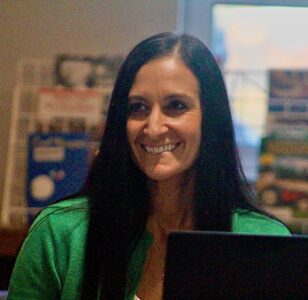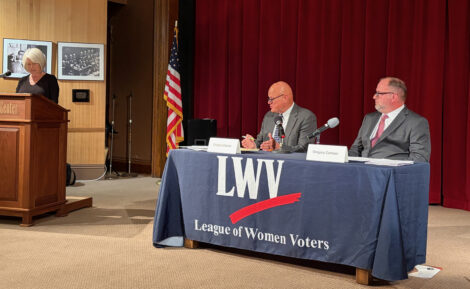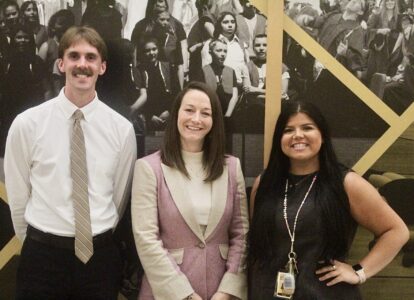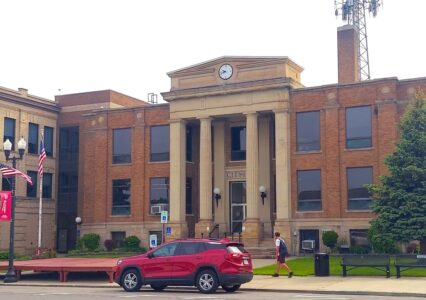Board of Elections gearing up for busy season

Employees at the Chautauqua County Board of Elections have been working nonstop to process a record number of requests for absentee ballots ahead of the Nov. 3 election.
MAYVILLE — Brian Abram characterizes a successful election by a simple metric.
“My job is this: if you don’t know who I am and you don’t have me in the newspaper following the election, I’ve done a good job,” the Republican Commissioner of Elections said with a laugh.
That goal will be a little harder one to achieve this year: his North Erie Street office features a cacophony of activity in recent days: phones are ringing consistently, envelopes are being opened, labels are being applied and more envelopes are being sent out by the hundreds. The Chautauqua County Board of Elections reported this week that well over 8,200 absentee ballots have been mailed out to voters from across the county as of last week. As of Wednesday, nearly 1,200 had already been mailed back.
Abram and Democratic Election Commissioner Norm Green are projecting a 55,000 voter turnout — 15% of that number already have a ballot in hand with the intention to vote. Those statistics leave the former “blown away.”
“I knew it would be popular, I just didn’t think it would be this popular,” Abram said. “It’s to the point now that whatever our predictions are, they seem to be a little bit lower than what’s probably going to happen. The highest that we’ve ever had was like 4,100. We’ve doubled that and it’s September.”
That means Nov. 4 — the day after Election Day — may likely come and go without clear cut winners in most races across the county and the United States.
“Election Night is not going to be the Super Bowl like it used to be,” Abram said. “The results, in my opinion, and in a lot of races will be nothing. It won’t give you any closure. You’re going to go to bed as a candidate, maybe as a country, maybe as a whatever — you might not go to bed without knowing who actually won for quite some time. In Chautauqua County and New York state, that’s a different way of doing it.”
While these trends place stress on the normal system of providing election services, Abram said he has full confidence in the county’s ability to run a fair election with an expanded absentee service.
“I feel the system here in New York will provide the process to come to an outcome that will be fair and correct,” he said. “I feel fear for the fact that the process is being somewhat scrutinized and maybe in certain cases it doesn’t need to be.”
He added, “Here in New York, I think our system has always been good. I think we’ve put stress on it but I don’t think we’ve done anything then tell more people to vote early. So we’ve shifted the volume and we’ve shifted everything.”
Expansion of absentee services was something his office has gradually been preparing for, too.
“We’ve changed the dynamic to make it a more liberal way of exercising your right,” Abram said. “We just did it, because of COVID, really quick. Those changes were coming, but with COVID it went from zero to 100. If we didn’t have COVID, we would have gone from zero to 20 though. There was already legislation for no-fault absentee voting out there. I have no problem with that. To me, that’s an extension of early voting.”
He added, “We’ve always had absentee voting. We may triple that this year, but it’s not like we created a whole new process. We took the current process and put it on steroids. We didn’t create a whole new voting method, we just did things differently.”
Most of all, Abram stressed one thing: absentee voting is not mail-in voting.
“Those are two different animals,” he said. “We have absentee voting, we’ve always had absentee voting, we’ve just put more energy and effort toward allowing people to participate in that end of it. Before that, it was very stringent. Our criteria of why you would want an absentee ballot in my version were way too limited.”
Now, voters are able to submit their absentee ballot application electronically at votechautauqua.com where they will also be able to track their voting and absentee ballot status using technology developed by the office’s election technician, Chris Burt.
“Chris Burt in our office put that together for us,” Green said earlier this month. “He’s a self-taught person. We have the premier tracking software in the state of New York and most counties don’t have anything to track their ballots.”
The office also was able to go through a dry run of what could come in the wake of the Nov. 3 election — the office assisted 10 of 18 county school districts with their election, conducted solely by absentee ballots. All active and inactive voters were mailed ballots for those votes on school budgets and board members in June. To process those ballots, employees processed ballots nonstop from 5 to 11 p.m. on the night of the deadline before starting the next morning at 7 and finishing that night.
“It’s not like we’re going to from 4,000 to 15,000 and not have had our faces in cold water as of June where we assisted 10 of the 18 school districts with bringing them in here in trays and have every staff all hands on deck,” Abram said. “We’ve already had an experience that was all hands on deck. Everyone was a part of the process.”
Out of concern that the state government would mandate a similar method of voting for the general election, Abram and Green anticipated a shortage of envelopes and ordered a mass quantity from Falconer Printing — upwards of 60,000 envelopes were ordered back in March.
“We pre-arranged to order those envelopes knowing that the storm could hit and we would be on the hook for the bare minimum — if it was inactive and active voters, which they did for the schools — that would be 270,000 envelopes going out the door because it’s a three-envelope system. … All plus postage,” Abram said.
Nevertheless, Abram said his and Green’s team is ready.
“It’s definitely convenient, it’s definitely a different method and it’s definitely doable,” Abram said. “You just have to rethink how you do your job and provide services and the services start in early September and end closer to Thanksgiving.”
He added, “We’re not Onondaga County, Erie County or New York City. We have our stress. But their stress has to be completely 10, 15 or 20 times bigger than ours.”






